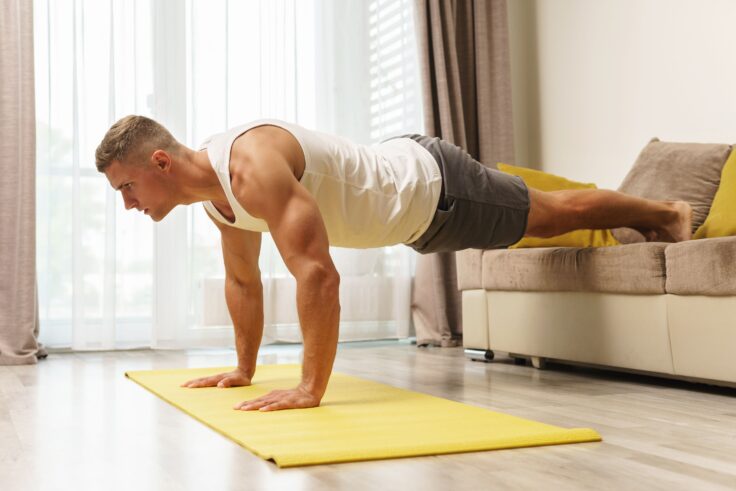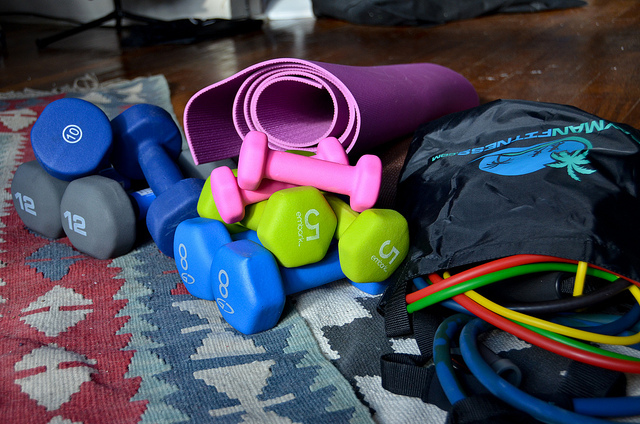How Do You Maintain a Healthy Workout Schedule in Winter?

Maintaining a healthy winter workout schedule can be a bit challenging. Nobody gets excited about going out for a run when the temperatures are below 0° Celsius.
You may also hate the idea of scraping all the snow and ice off your car just so you can drive to the empty gym.
One solution to this dilemma is to simply stop exercising in winter, but this is bad for your physical and mental health.
Instead, you should commit to practicing home workouts in winter – which is possible, even if you have a limited amount of space.
Let’s figure out the best way to approach this.
Maintain A Healthy Workout Schedule In Winter
To be able to maintain a healthy winter workout schedule here are a few guidelines to help you. Set yourself up for a great workout routine this winter.
Give these few steps a read and see how easily you can implement and maintain a healthy winter workout schedule.
1. Find The Right Spot

Your first goal is going to be finding the right spot. If you live in a cramped apartment or in a space you share with many other people, this might be difficult.
These will be your main considerations:
Space
You’ll need ample space to have a successful workout, but probably not as much space as you think.
You don’t need 20-foot ceilings, nor do you need 1,000 square feet of space; in fact, you can perform many exercises like push-ups, sit-ups, and burpees in roughly the same amount of space that a bed takes up.
The trick is finding a space in your home that works strategically, so do some brainstorming, move around some furniture, and see what you can make work.
Warmth
It’s also important to choose a space that is capable of keeping you warm.
Exercise has a way of heating the body, so you can tolerate lower temperatures than normal, but you also don’t want to start your workouts shivering.
The solution is to choose a space with a reliable form of heating.
For example, if you have a wood stove in your basement, that could be an excellent location for your workout space.
Noise
Finally, you’ll need to think about noise. Some exercises make little, if any noise, but many exercises involve pounding feet or clanking weights.
Ideally, you’ll find a space away from other people, or you’ll be able to use noise dampeners in your space to limit the nuisance.
2. Get The Equipment You Can

You don’t need a full home gym to have regular home workouts in winter, but any equipment you can afford may be helpful.
Cardio Equipment
Cardiovascular exercise equipment like treadmills, rowing machines, and elliptical machines can help you keep your heart and lungs healthy.
Free Weights And Resistance Bands
Free weights and resistance bands are relatively affordable and can give you access to resistance exercises for your muscles and bones.
Mats
You’ll also want to invest in mats to give you a soft landing space and additional comfort – not to mention some light noise-dampening effects.
Other Devices
You may also want other tools and devices like kettlebells, a notebook to keep track of your progress, or a speaker system to motivate yourself with music.
3. Learn Calisthenics For Your Entire Body

Calisthenics are exercises that use only your body weight – so you won’t need any equipment to practice them.
If you’re trying to workout at home on a budget, they’re going to make up the bulk of your workout regimen.
Fortunately, it’s possible to practice a sequence of calisthenic exercises that can engage your entire body, one section at a time.
- Pushups are great for your chest and arms.
- Sit-ups are great for your abs and core.
- Pull-ups are ideal for your back.
- Squats and jumping jacks are good for your legs.
- And some exercises, like burpees, are designed to work several parts of your body at once.
4. Develop A Consistent Routine

The final step of the process is to develop a routine that you can follow consistently. Consistent exercise is better for you than occasional, intense exercise, so create a habit you can follow indefinitely.
Exercise Every Day
Exercising daily holds you accountable and helps you stay more consistent in the long term. Even if you only exercise for 20 or 30 minutes at a time, that’s plenty to see the benefits. Additionally, not every day needs to be intensive or a major challenge; you can work light days into the rotation.
Pick The Right Time
Genetics and environment both play a role in the timing of our energy and motivation. Choosing the right time for your workout can make a huge difference in how you feel about exercising; for example, some people like working out when they first wake up, but others do better working out after work, later in the night.
Work Different Parts Of Your Body On Different Days
For faster progress and a healthier body, consider working on different parts of your body on different days. Develop a split so you afford your muscles plenty of time to rest and recover.
Keep Challenging Yourself
If you find your routine becoming stale or repetitive, find new ways to challenge yourself.
Can you up the weight or resistance?
Is there a new exercise that could help you move in new, challenging ways?
The Takeaway
With this guide, you should be able to remain sufficiently motivated to exercise throughout the winter in the comfort of your own home.
It may not be the perfect setup, and you may find yourself longing for summer, but you’ll at least be able to stay in better physical and mental shape during these harsh months.